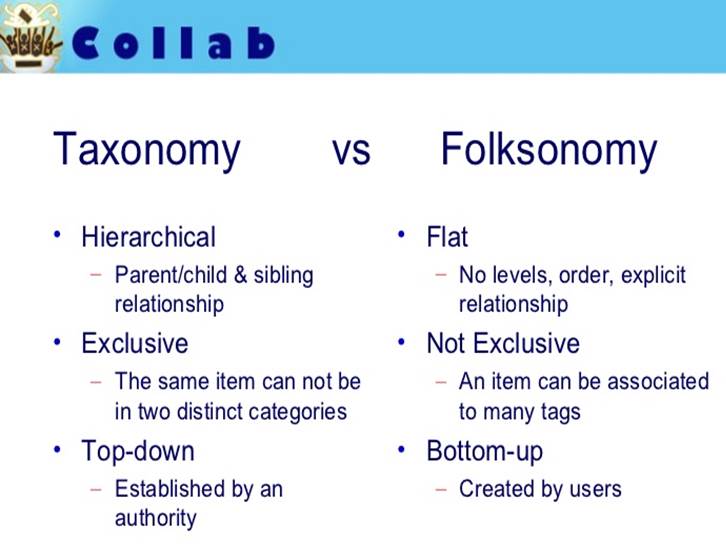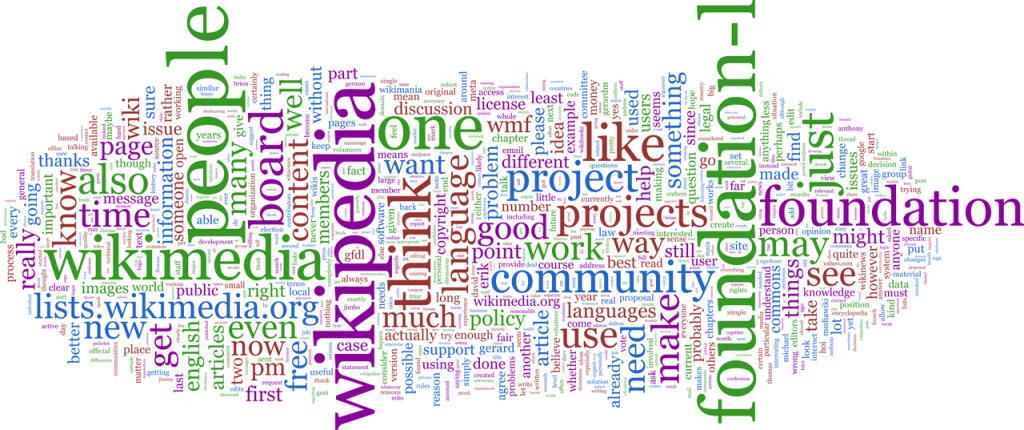Objectives
On completion of this unit, you will be able to:
- define key concepts pertaining to tagging literacy
- explain how tagging works and how to develop one’s tagging skills
- select resources for the classroom and design tagging literacy tasks for your students
Definition
Dudeney, Hockly and Pegrum (2014: 19) define tagging literacy as the “ability to interpret and create effective folksonomies (user-generated indexes of online resources represented visually as tag clouds).”
So, what is Tagging Literacy?
One of the important features that Flickr, WordPress, Twitter and Instagram have in common (among others) is the ability for the users to tag.
Tagging is a form of social classification and is tightly related to the term folksonomy (see below). To the language learner, tagging can be a significant tool, which can help them enhance their search skills, preserve their research trails and manage their resources.
Tags can be added, edited, removed and updated by the user. Tags make sense to the individual who assigns and uses them, however, we can teach our students to sharpen their efficiency: creating folksonomies, the language learner will draw on traditional language and literacy skills needed to find appropriate descriptive and classification labels.
A few websites allow you to create your own folksonomies, for example del.icio.us and diigo. These tools help students to keep track of their research and useful links for their studies and/or personal interests. Furthermore, if our language learners release their folksonomies publicly, ‘they will be contributing to the global task of managing digital information, thereby developing their participatory literacy‘ (Dudeney, Hockly and Pegrum, 2014: 19).
What is FOLKSONOMY? What does FOLKSONOMY mean? FOLKSONOMY meaning & explanation
About tagging literacy
Folksonomies versus taxonomies
Taxonomy, in a broad sense, is the science of classification. Until the 2000’s, it used to refer strictly to biological classifications of living and extinct organisms. The term is derived from the Greek taxis (“arrangement”) and nomos (“law”). Taxonomy was, therefore, the methodology and principles of arranging plant and animal species in hierarchies of superior and subordinate groups. The taxonomy is specified by the owners of the content when it is published.
A folksonomy is also a classification system. It differs from taxonomy in that users apply public tags to online items, typically to aid them in re-finding those items. Moreover, a folksonomy establishes categories without stating any type of hierarchy. Unlike taxonomies, which are unbending and cannot be modified, folksonomies allow materials to be classified in several ways at the same time.

Word clouds and tag clouds
Word clouds are a form of data visualisation (like charts, graphs, infographics, and more) and work in a simple way: the more a specific word appears in a textual source or artefact, the bigger (and sometimes bolder) it appears in the cloud.
A tag cloud will also display words by their frequency. However on a tag cloud, these words will serve as hyperlinked indexes. Furthermore, these tags will be created, added, and edited by the users themselves rather than depending on their frequency in a text.

Some useful links
- Tag Literacy (2005), Ulises A. Mejias, Associate Professor, SUNY Oswego
Activities for the classroom
Pre-mobility programme: Exploring new places with Google maps
Writing skills: Writing Strategies – Using blogs
What’s next?
Source/attribution: Digilanguages. Author: Alexandre Jacquot
Additional Content
Additional tips for teachers
A few websites are available to everyone for creating word clouds: Wordle ; TagCrowd ; Tagxedo
WordPress is a useful website that gives us the possibility to create class blogs in which students can experiment tags and tag clouds.
Two tools to create your own folksonomies : diigo; delicious
Liens utiles
La Pratique du Social Bookmarking, les Folksonomies et la Gestion Documentaire au service de l’enseignement et de la traduction spécialisée, Elefthéria Dogoriti et Théodore Vyzas
Taxonomie, L’Oeil de l’ADBS, Bruno Menon
Forum Tags Youtube, Comment Ca Marche
Definitionen
- Im Duden
- Bei Wikipedia
- Im Gabler Wirtschaftslexikon
Zum Weiterlesen gibt es hier eine Einführung der Uni Potsdam.
Nützliche Hilfsmittel
Wortwolke.com bietet einen kostenlosen Service zur Herstellung von tag clouds an.
Materiale aggiuntivo in italiano
Da leggere:
- Il sito TeamWorld.it dà una definizione del neologismo taggare
- Molto semplice e chiara è la pagina di Cosa significa taggare.it
- Il blog Didalgo spiega il concetto di folksonomia
- Un’altra buona descrizione delle folksonomie viene fornita dal sito, purtroppo non più aggiornato, 2puntozeropertutti.it
- Improntedigitali.net dà indicazioni su come creare nuvole di parole o di tag

